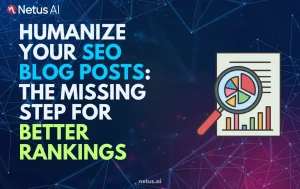
Google’s Helpful Content Update: An SEO Writer’s Guide | NetusAI
SEO Writer’s Guide to Google’s Helpful Content Update Keeping up with Google’s algorithm changes can feel like a relentless game of whack-a-mole. Just when you
Common Citation Mistakes: Identifying and Avoiding Them

Content writer and editor for Netus.AI
Common Citation Mistakes. Citations play a crucial role in academic writing, as they allow writers to give credit to original sources and avoid plagiarism. The improper use of someone’s work may lead to harmful consequences, such as legal actions taken by the original author. While some writers focus on writing styles and formats, they might take citations casually, leading to errors. To maintain a high level of accuracy and clarity in any research paper, understanding the importance of proper citation is essential.
In the process of drafting an extensive research paper, a long list of citations may emerge. Here lies the challenge for writers to determine what to cite and what not to. At times, publishers may encourage abbreviating works to avoid an excessive number of pages, which could also lead to citation errors. Thus, possessing a good knowledge of appropriate citation practices is crucial when producing a research paper. Proper citation ensures that the readers can easily locate the original sources and appreciate the value of the writer’s work.
Writers usually maintain a list of resources they intend to quote or paraphrase, making the citation process more manageable. This list should contain essential details like the author’s name, publication date, among other relevant information. A thorough spell-check of these details helps avoid errors.
While incorporating in-text citations, writers should ensure accurate usage of quotation marks, as well as scrutinize the quoted part for potential mistakes such as spellings or misplaced periods.
A common misconception among writers is that paraphrasing does not require citing the source. Although the paraphrased content does not need quotation marks, it is essential to cite it appropriately. By following these guidelines, writers ensure proper citation and avoid inaccuracies, enhancing the credibility of their work, whether it’s an academic thesis, a scholarly article, or a reference material.
When writing academic papers, it is crucial to pay attention to proper citation to avoid plagiarism. Here are some common citation mistakes and how to avoid them:
In conclusion, it is important to check your work thoroughly to ensure all citations are correctly formatted and error-free. Using a plagiarism checker can help detect any accidental duplications or citation mistakes, enabling you to fix them before submission.
Mistakes in author names can make it difficult to locate the original source and affect the paper’s credibility. Examples of common mistakes include:
Issues with online source citations typically involve:
Utilizing outdated citation guidelines can:
Mistakes or omissions in publication dates can:

SEO Writer’s Guide to Google’s Helpful Content Update Keeping up with Google’s algorithm changes can feel like a relentless game of whack-a-mole. Just when you

Can AI Content Be Safe for SEO in 2025? Let’s start with the question of keeping every content strategist, SEO pro and blogger awake at

Humanize Your SEO Blog Posts: The Missing Step for Better Rankings You’ve done everything by the book. Your keyword research is impeccable. Your meta descriptions

How to Pass AI Detection Tests as an SEO Writer Let’s paint a familiar picture. You’ve just finished a blog post. The headline is sharp,

Why Your AI SEO Blog Isn’t Ranking (And How to Fix It) You embraced AI for your blog. The promise was intoxicating: high-quality content, published

The Modern SEO Writer’s Stack: Tools to Stay Ahead in AI-Powered Search Remember the days when “SEO writing” conjured images of frantic keyword stuffing, awkward
@ 2024 Netus AI.